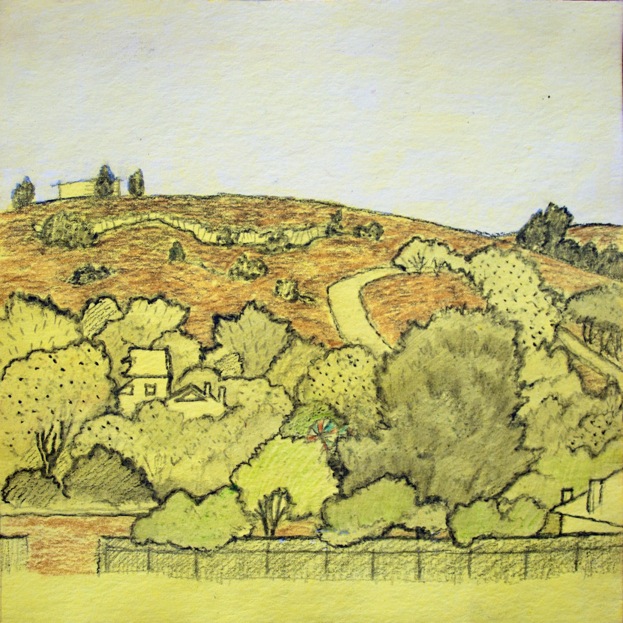Burra to Felenne by Lis Jones Ingman – Artist Project
BETWEEN LIGHTNING AND THUNDER: Drawings and Paintings of Burra
After a party in her Shared Arts studio to give the art works a good send off, on Saturday 7 April, Lis is now enjoying some Belgian hospitality from her good friend Myriam Chardome. Last minute preparations are being finalised as Lis sets up her showcase of loving vingnettes of Burra.
To be shown Sunday 22 April in the community hall, Felenne, Belgium with a postcard of Burra on Belgian Relief Day 1915, published by the Burra History Group April 2012.



Come with me to the small town of Burra, deep in the heart of South Australia. In summer, a hot dry place on the edge of hotter and drier land, in winter cooler and livelier. Between March and November tourists pass through, making their way to the north, east and west.




To get here you have to drive from the southern city of Adelaide, and to get to Adelaide takes many hours by plane, the journey I will make when I return home from Felenne.


I have drawn these pictures to share our town with you. The 1300 people of Burra live in mining heritage surroundings. In Australia we think of this town as old: Australia was not settled until 1788 in Sydney Cove; people have been living around Burra since about 1840, and houses were built when copper was discovered. My house in Thames Street was built in 1847 and is one of the oldest.



Right across the road is an Italian pizzeria, seen here dressed up for Christmas.

Round the corner are all the shops anyone could need: post office, supermarket, bakery, banks, pharmacy, gift shops, coffee shops and cafes, collectibles and businesses. Over the road is the Council Chambers. I live right in the middle of town!

The town was built around the copper mine and alongside Burra Creek. In the days when the population was over 4,000 it was made up of many communities such as Kooringa, Aberdeen, Redruth, and Copperhouse. Now all have become Burra and North Burra, connected by the creek with the heritage mine up on the hill between. Here is a sheltered seat for people walking between the two parts of town.

Many of the people who live here are descended from the skilled miners and engineers who migrated to this distant place to make a living and raise their families. Others, like me, have arrived more recently because we like the character of the town, its people, and the wide range of things there are to do.




The cottages and houses of Burra are comfortable, especially with the addition of a modern annex and all mod cons. We stay cool in summer and warm in winter because of the thick stone walls, and air conditioning of course! The streets are lined with trees suited to the climate – eucalypts, white cedars, carob, kurrajong and pine.



There are many churches and pubs in Burra – a few still in use but most now private homes. When the mine was at its most productive there were not enough houses, and people made dugouts to live in along the banks of the creek.



When eventually the mine failed due to seepage of water, the town did not die. The surrounding country is perfect for growing wheat and wool, and now the main street is full of people coming to town to do their shopping, meeting together in the coffee shops and pubs, doing business and having fun.


I spend time in my studio, and people come there too, for classes and workshops. Next to my studio in Chapel Street is one of Burra’s many bridges crossing the tributaries that the town is built around. The bridges have solid stone supports to withstand the force of the water when the creek floods. Market Street has 6 slate bridges crossing a deep gutter, so people can cross to the shops. At times, water runs everywhere. Then it goes away and we clean up the mess!

In Felenne everyone can buy a small piece of Burra in a silent auction, and there will be a postcard from Burra for everyone who comes, as a thankyou gift for your hospitality.

